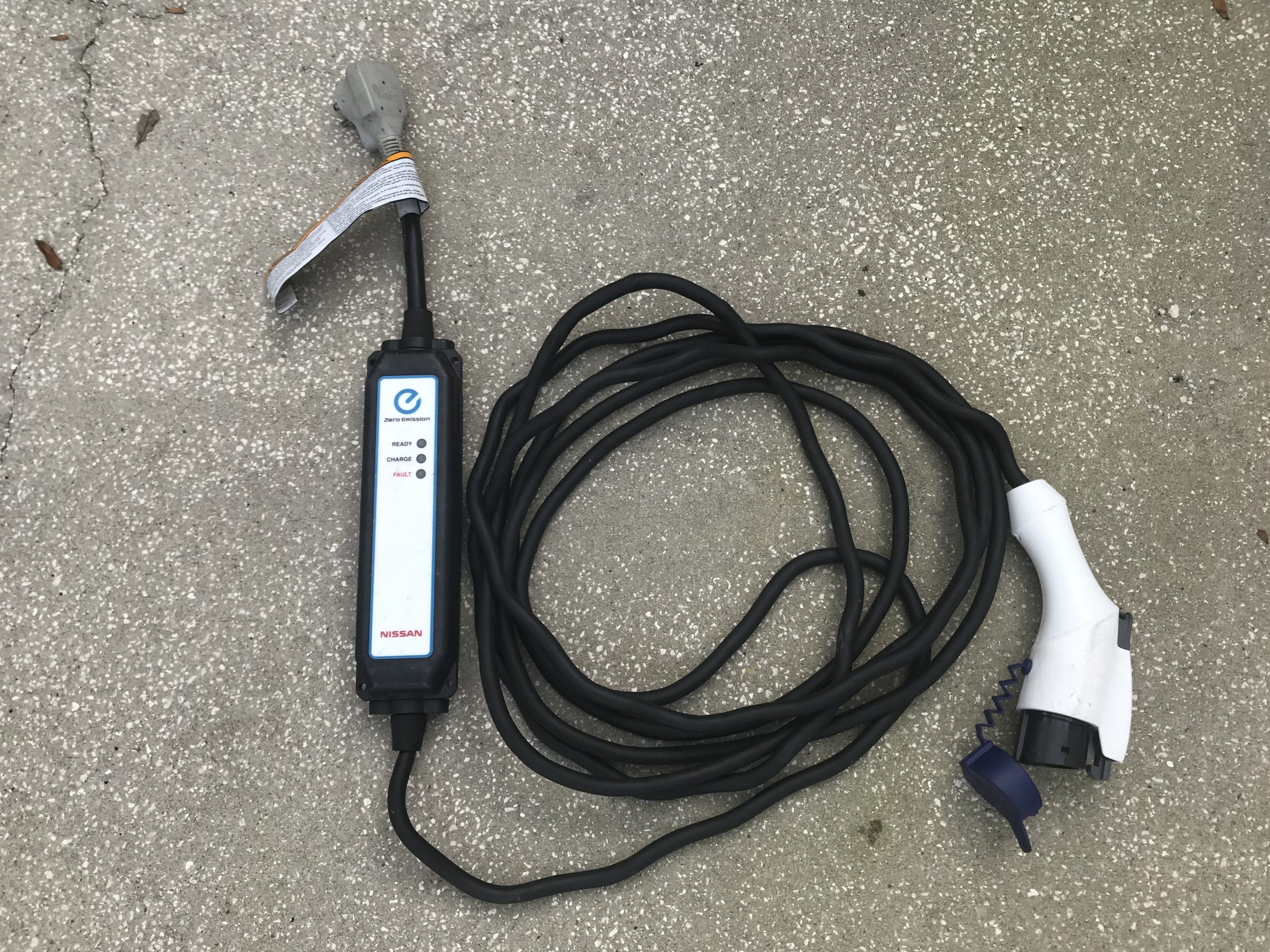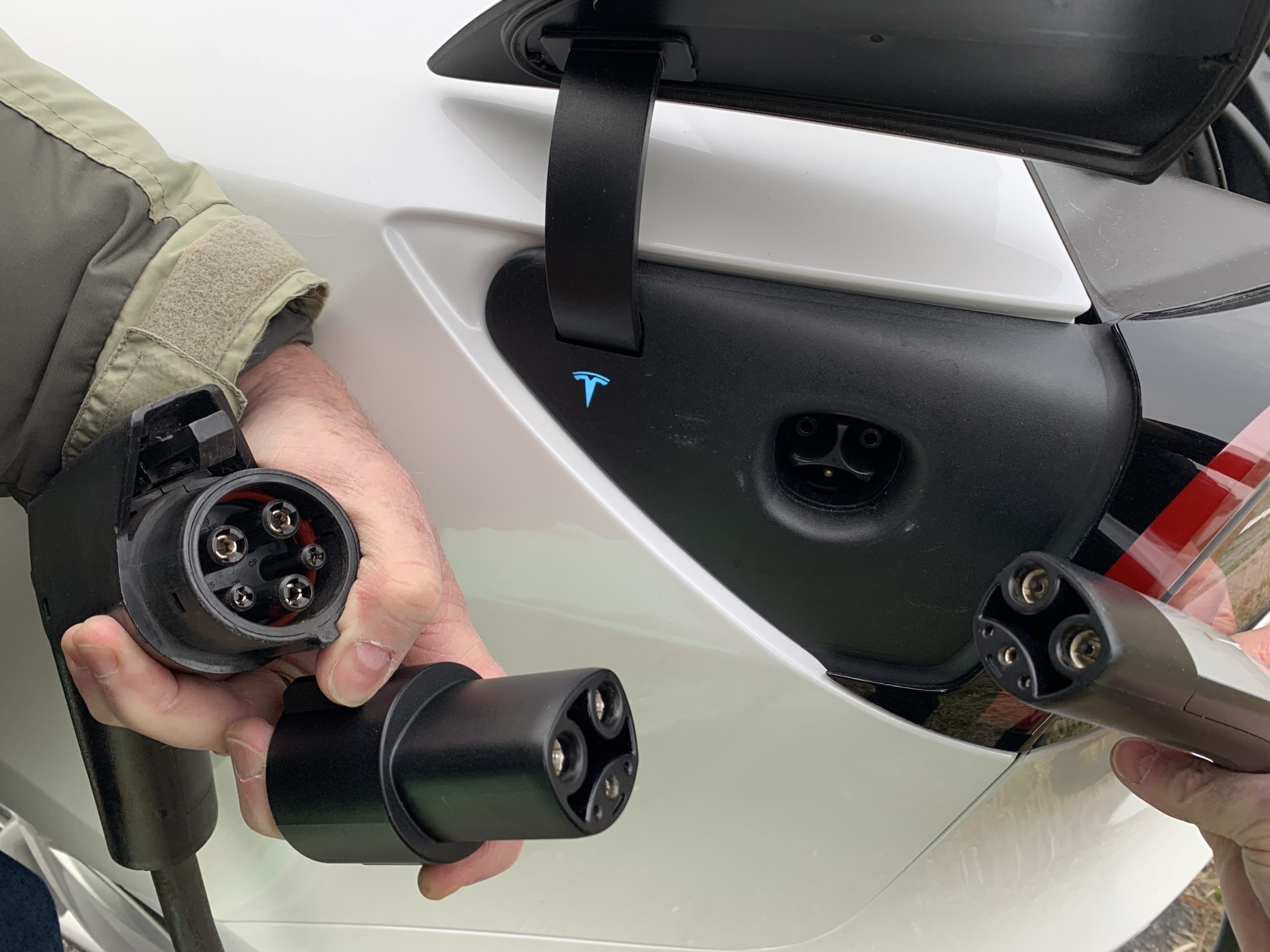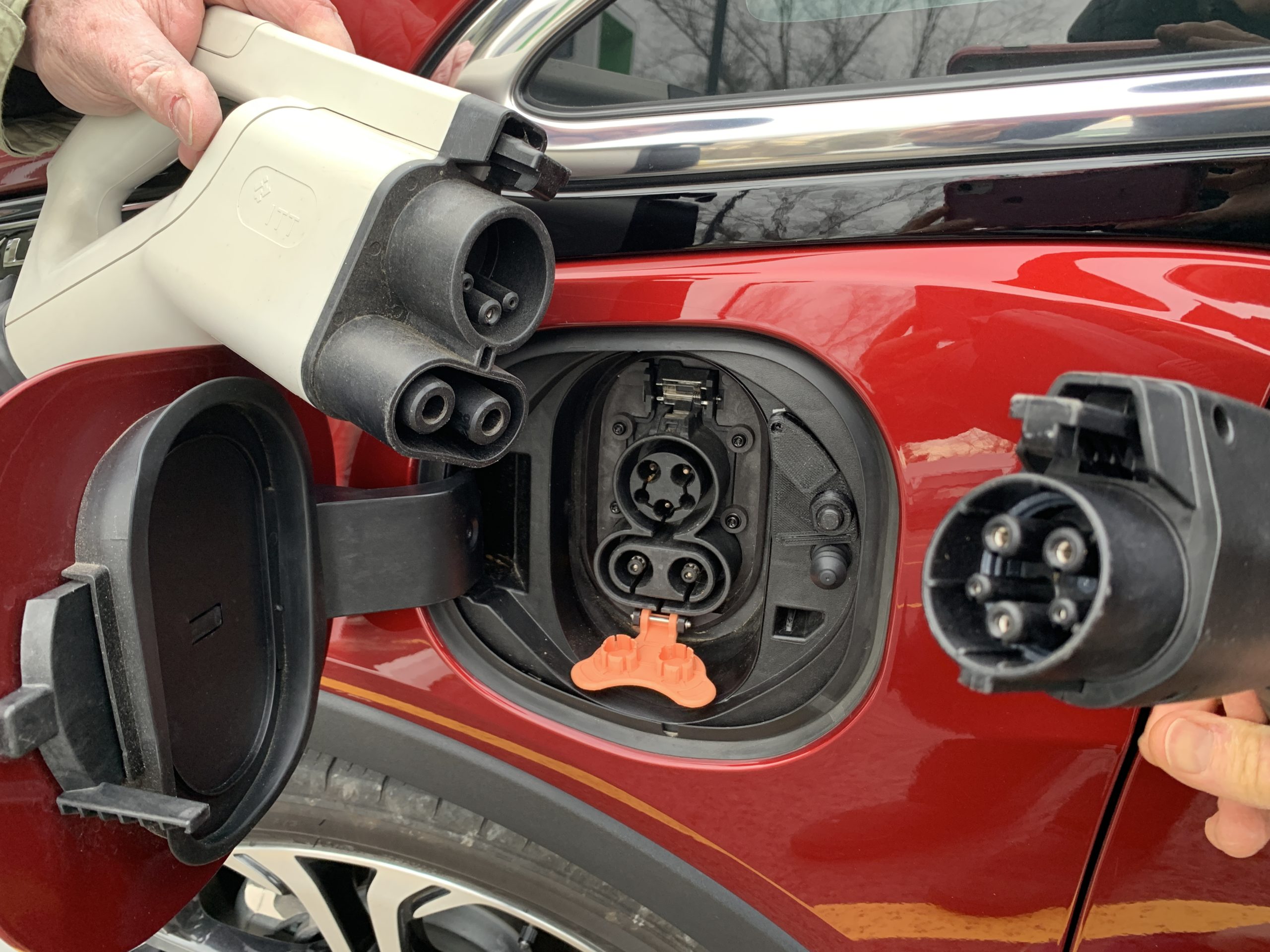This is the second post in a series written by Dave Erb intended to demystify electric vehicle (EV) charging, both for prospective EV buyers and for new owners still getting to know their EVs.
Guest Blog | January 15, 2020 | Clean Transportation, Electric Vehicles
Some confusion arises from the existence of several different EV charge plugs. But it’s not really that different from the reality of internal combustion vehicles (ICVs). You don’t generally notice, but the fuel dispenser nozzle (and fuel tank filler neck) for leaded gas is one size, unleaded is a different size, and diesel is yet a third. But rarely does anyone fill up with the wrong fuel. Even if someone tried, the nozzles and necks would prevent the most likely misfuelling cases. That’s the reason they’re different sizes. [Warning: Because gasoline nozzles are smaller than diesel nozzles, the neck won’t prevent you from putting gas in your diesel tank. Don’t do that!]
EVs are even simpler. Electrons are all the same, and a plug either fits your car, or it doesn’t. If it fits, it will work. If it doesn’t fit, you can go to PlugShare and find one nearby that does. So what’s with all the different plugs? Let’s start with the broader why, and then move to the details.
Two preliminary comments: First, the term “EVSE” (electric vehicle service equipment) is synonymous with “EV charger” for everyone but hardcore EV geeks. Second, though technically incorrect to do so, the term “Level 3 charging” is widely used to mean “direct current (DC) fast charging.” We’ll encourage more people to embrace EVs if experts will cut everyone else some semantic slack.
Different plugs for different charge rates
Most of the variety in plugs arises from a desire to provide charging at different rates. Known as Level 1 (L1, slow), Level 2 (L2, medium), and direct current fast charging (DCFC, fast), the different charge rates are dictated by the electric supply on the utility side of the charger, along with some of the equipment on the vehicle side.
Every EV comes with a Level 1 charge cord, which looks like a larger version of the power cord that came with your laptop. The supply (utility grid) side of this “opportunity charger” can be plugged into any standard (120 volt), grounded (three-prong) household socket, like you use for a lamp or toaster. The vehicle side of the charger connects to the EV’s charge port using a J1772 plug, a standard design for EVs specified by the Society of Automotive Engineers (SAE). L1 charging will replenish five miles of battery range for every hour that the EV is plugged in. An overnight charge on L1 will replenish 40 to 80 miles of range, which will cover typical daily driving for most people. (All numbers in this post should be treated as approximations. As with everything else in life, your mileage may vary.)

Level 2 charging uses the same J1772 plug as L1 on the vehicle side but draws electricity from the grid at higher voltage and current. Almost all public and some private L2 chargers are hardwired to their supply, though many private chargers aren’t. Those that aren’t hardwired are plugged into the types of outlets used by clothes dryers or ovens. L2 charging will generally replenish 20 or more miles of range per hour, so an overnight charge can fill even the largest EV batteries.

L1 and L2 use electricity in forms found in typical houses, so they are suitable for personal ownership. DCFC uses industrial-strength electricity, making the equipment far too expensive for personal ownership, so it is found only in public and commercial settings. DCFC replenishes energy at rates fast enough to make EV recharging comparable to (though still slower than) ICV refueling and is essential for convenient road-tripping. Because charging must slow down as batteries get close to full, most drivers only charge to about 80 percent when using DCFC. Depending on the vehicle, charging from empty to 80 percent takes anywhere from 30 to 75 minutes, usually closer to the former. This rule of thumb is independent of battery size/vehicle range.
DC Fast Charging, plus Tesla
Most of the confusion about charging plugs stems from DCFC, plus Tesla. Let’s start with Tesla. On its current products (Models S, X, and 3), Tesla employs a single proprietary plug design for all three charging levels, including on its widespread Supercharger (DCFC) network. Additionally, Teslas come with an adapter to allow charging from a J1772 plug. Simple.

DCFC gets a little murky. There are three “standard” DCFC plug designs, each competing for market share and hoping for eventual market dominance. Think of it as VHS vs. Beta all over again, with a third model thrown in for good measure. As stated before, Tesla uses a single proprietary plug design for all charging levels, including DCFC. Some models, most notably the Nissan Leaf, use a Japanese industry-standard plug called CHAdeMO for DCFC. Virtually all American and European models use an SAE standard plug, known as CCS (Combined Charging System) because it combines the basic SAE J1772 design with two high voltage DCFC wires.


The main thing to remember: PlugShare is your friend. Once you know the types of plugs that your car can use, you search for charging locations that support them. There are more than you probably think, and the number is growing all the time.
Read Part One of the series, “Demystifying EV Charging: Pre-School – ABC, Do-Re-Mi.”
Read Part Two of the series: “Demystifying EV Charging: Elementary, My Dear Watts-In”
Read Part Three of the series: “Demystifying EV Charging: High School Not So Confidential”
Read Part Four of the series: “Demystifying EV Charging: College – Spring Break Road Trips!”
Note about this blog series author: In a four-decade automotive engineering career focused on energy and emissions, Dave developed vehicles using gasoline, diesel, biodiesel, alcohol, natural gas, electric, and hybrid-electric powertrains. From 1995 to 2004, he created and taught a three-day professional development short course on “Design of Hybrid Electric Vehicles” for the Society of Automotive Engineers. He is the author of Chapter 1 of “Driving to Net 0: Stories of Hope for a Carbon-Free Future,” a collection of 15 first-person accounts of families pursuing sustainability by combining solar houses with electric vehicles and a volunteer with the Southern Alliance for Clean Energy.
#EVChargingSeries
